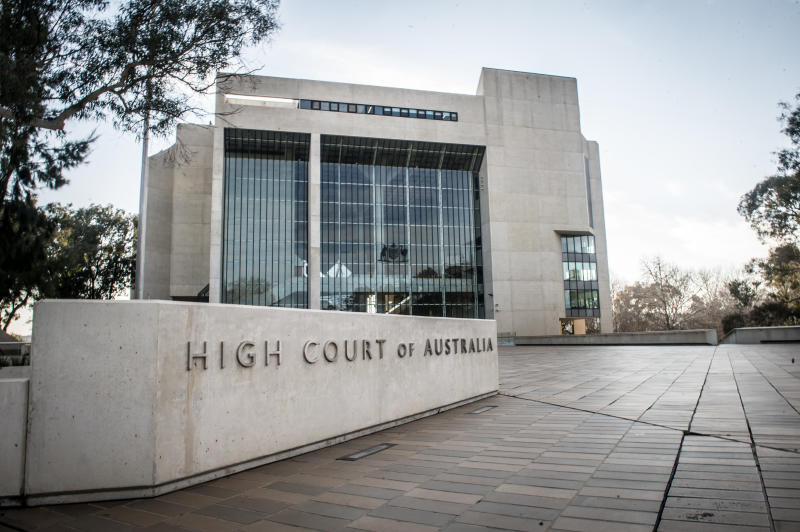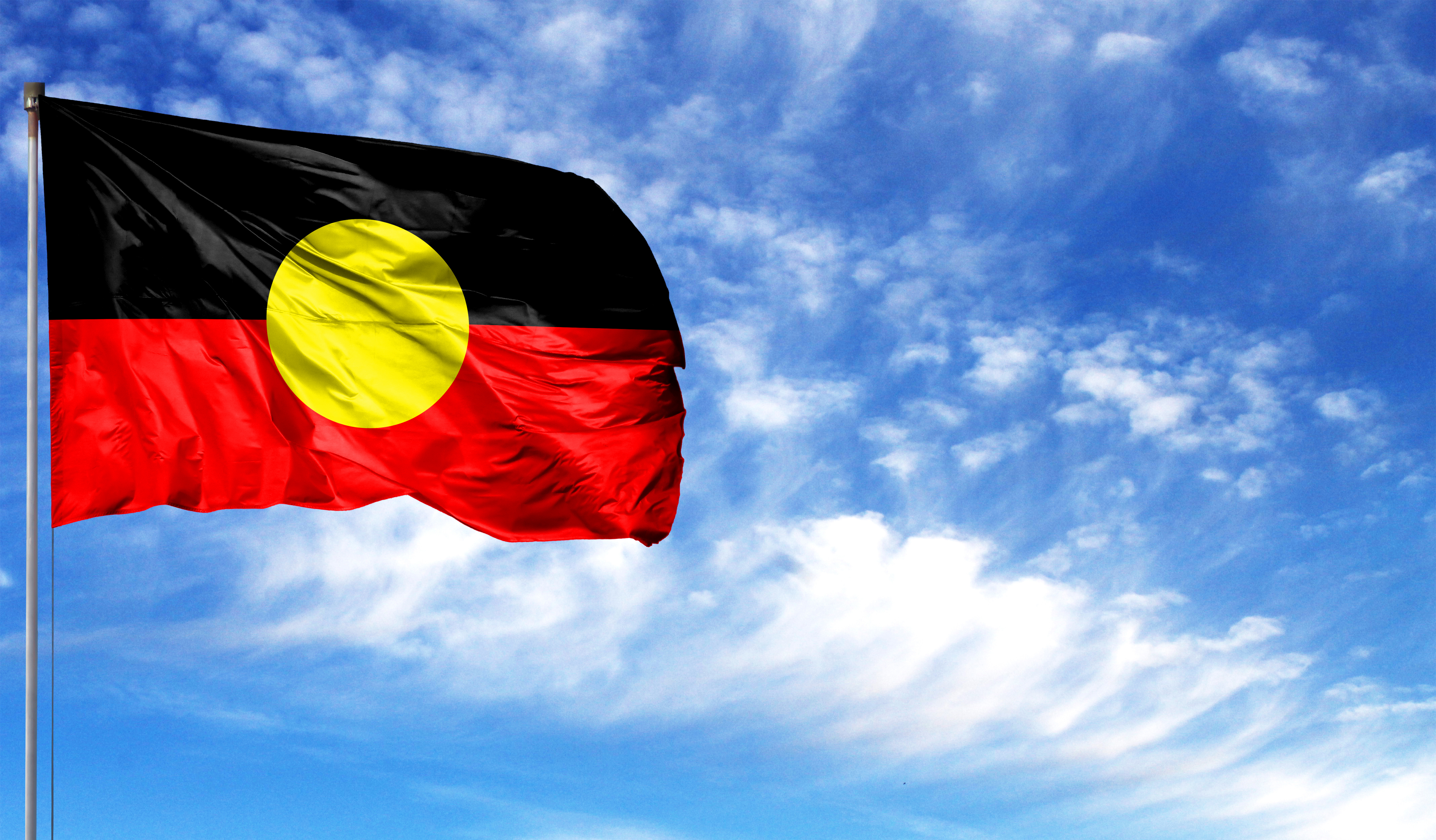'Non-citizen, non-alien'
Love v Commonwealth of Australia; Thoms v Commonwealth of Australia
Introduction
On 11 February 2020, the High Court delivered its decision in Love v Commonwealth of Australia; Thoms v Commonwealth of Australia [2020] HCA 3. The principal question for the Court was whether Aboriginal persons were within the reach of the 'aliens' power under s 51(xix) of the Australian Constitution, in circumstances where those Aboriginal persons were born overseas and were not citizens of Australia under relevant statutory provisions.
The plaintiffs – Daniel Love and Brendan Thoms – were born in Papua New Guinea and New Zealand, respectively, and were each citizens of their respective countries of birth. They had both lived in Australia for substantial periods, on visas, but had not sought to become Australian citizens. In 2018, Mr Love was sentenced to 12 months’ imprisonment and Mr Thoms to 18 months’ imprisonment, for unrelated offences against the Criminal Code (Qld). The Minister for Home Affairs cancelled their visas under s 501(3A) of the Migration Act 1958 (Cth) (Migration Act), which requires the Minister to so cancel if a person has been convicted of an offence for which a sentence of imprisonment of 12 months or more is provided. Upon that power having been exercised, the plaintiffs were statutorily deemed 'unlawful non-citizens' capable of being detained and removed pursuant to ss 189 and 198 of the Migration Act.
The plaintiffs challenged the constitutional validity of the statutory provisions authorising their detention and removal on the basis that each of them, as an Aboriginal person, could not be considered an 'alien' for the purposes of s 51(xix) of the Constitution. If that was correct, the relevant provisions of the Migration Act, enacted in reliance upon the 'aliens' power, were invalid with respect to the plaintiffs. The plaintiffs emphasised that Aboriginal people have inhabited Australia for at least 40,000 years, lived here continuously ever since and possess a unique spiritual connection to Australian land and waters, such that each Aboriginal person is essentially Australian and cannot answer the description of an 'alien' in the ordinary sense of that word.
Perhaps as a result of the sensitivities arising from the subject matter of the case, or simply due to the myriad pathways by which a conclusion might have been reached, the Court delivered seven individual judgments. It held by a 4:3 majority that Aboriginal persons could not be considered 'aliens' for the purposes of s 51(xix) of the Constitution, even if those persons also did not fall within the meaning of 'citizen' under the applicable statutory provisions. The immediate effect of the decision has been to break down any assumption of a dichotomous relationship between the statutory concept of citizenship and the constitutional notion of alienage, and to create a category of person as yet unknown to Australian law: a 'non-citizen, non-alien'.
Reasoning of the majority
The Commonwealth’s primary submission was that an 'alien' had, since Nolan v Minister for Immigration and Ethnic Affairs (1988) 165 CLR 178, become synonymous with a 'non-citizen'. In Shaw v Minister for Immigration and Multicultural Affairs (2003) 218 CLR 28 at 35 [2] it had been observed by Gleeson CJ, Gummow and Hayne JJ that 'citizenship may be seen as the obverse of the status of alienage'. The proposition imports the notion that the constitutional concept of 'alien' may be statutorily determined: a 'non-citizen' is defined in s 5(1) of the Migration Act as a person who is not an Australian citizen, and the ways in which a person might automatically be or become an Australian citizen are prescribed in the Australian Citizenship Act 2007 (Cth). In a secondary submission, the Commonwealth further contended that, in Singh v Commonwealth (2004) 222 CLR 322, a defining characteristic of alienage had been held to be allegiance to a foreign power.
The majority – Bell, Nettle, Gordon and Edelman JJ – rejected the Commonwealth’s contentions, although the precise reasons for doing so varied among them. Justice Bell, for example, emphasised that the exercise of Australia’s sovereign power does not extend to the exclusion of Indigenous people from the Australian community (at [73]). Her Honour concluded that Aboriginal Australians could not fall within the constitutional concept of alienage 'despite the circumstance of birth in another country, [as] an Aboriginal Australian cannot be said to belong to another place' (at [74]).
For Nettle J, the concept of allegiance to the Crown in right of the Commonwealth was central to deciding the case. The relevant starting point was the limitation placed on the legislative power to attach incidents of alienage to persons who are not Australian citizens: 'the Parliament may not determine to treat as an alien a person who could not possibly answer the description of ‘alien’ according to the ordinary understanding of the word' (at [236]). It followed that although some individuals might be denied citizenship by statute, they would not necessarily be aliens in circumstances where they had a strong claim to the protection of, and therefore owed an allegiance to, the Crown in right of Australia (at [251]-[252]). Such obligations of protection arose from the spiritual connection of Aboriginal communities to their country (at [276]-[277]), which survived the Crown’s acquisition of sovereignty (at [278]). They generated reciprocal obligations of permanent allegiance to the Crown (at [279]).
Justice Gordon, by contrast, referred in the opening sentence of her Honour’s judgment to 'the deeper truth' arising from the decision in Mabo v Queensland (No 2) (1992) 175 CLR 1 (Mabo [No 2]), being that the 'spiritual or metaphysical' connection between Indigenous people and Australian land and waters had not been severed by European settlement (at [289]-[290]). Her Honour drew a clear distinction between the constitutional question of alienage and the statutory expression of citizenship (at [295], [300], [304]-[312]). For Gordon J, the constitutional term 'aliens' conveyed otherness, being an 'outsider' or foreignness. It could not therefore apply to Aboriginal Australians as they were not outsiders to Australia (at [296]).
Echoing a theme common across the majority judgments, Edelman J also rejected the
proposition that legislatively designated citizenship was the perfect antonym for constitutional alienage,
noting the oft-cited principle that Parliament 'does not have an unlimited ability to recite itself into a
constitutional head of power' (at [395]). For Edelman J, the correct antonym of an alien was 'a ‘belonger’ to
the political community' (at [394]). In contrast to Nettle J’s approach, Edelman J cast some doubt over whether
the allegiance was the appropriate test, or even an appropriate factor in a test for non-alienage since resident
aliens can also owe local allegiance and dual citizens can owe foreign allegiance (at [429]-[430]). His Honour
instead emphasised that, while the application of 'alien' may have evolved over time, this did not deny that it
had an essential meaning which was fixed beyond legislative control (at [399]). In reaching this conclusion,
Edelman J addressed the racially-motivated origins of the aliens power, citing comments made by delegates during
the Convention Debates regarding their desire to empower Parliament to keep out of Australia citizens of the
British Commonwealth (such as residents of India and Hong Kong) whom they were 'far from desiring to see come
here in any considerable numbers' (at [407], citing Charles Kingston – delegate for South Australia). While
those comments are in themselves revealing of the overt racism common in the late 19th century, they also
disclose that the framers of the Constitution had in mind that alienage was a distinct concept from citizenship.
As to the question of determining the plaintiffs’ Aboriginality, all the justices in the majority accepted the applicability in this context of the tripartite test established in native title, as set down by Brennan J in Mabo [No 2] at 70: '[m]embership of the Indigenous people depends on biological descent from the Indigenous people and on mutual recognition of a particular person’s membership by that person and by the elders or other persons enjoying traditional authority among those people' (Bell J at [79]-[80], Nettle J at [271], Gordon J at [366]-[371], Edelman J at [458]). There appears to have been some disagreement within the majority on the question of whether the Commonwealth properly conceded that both plaintiffs in this case were Aboriginal (Bell J at [77], cf Edelman J at [461]) and therefore whether the Mabo [No 2] test was necessary to apply. Justice Bell applied the test and formed the view that in deciding that Mr Love was Aboriginal it was sufficient that he had been recognised as a member of the Kamilaroi tribe by an elder of that tribe (at [79]). Justices Gordon and Edelman agreed that that conclusion, having not been disputed by the Commonwealth, was open (at [388] and [462], respectively). Justice Nettle, on the other hand, remained unconvinced and remitted the question to the Federal Court for determination (at [288]). No such issue arose with respect to Mr Thoms, who had previously been recognised as a common law native title holder.
The minority position
The principal point of departure between the majority and minority justices was that the latter accepted that it was for Parliament to determine the scope of alienage. While the minority justices did not deny that there were limits to the legislative power, they applied those limits in a manner that afforded the legislature greater latitude in the power’s exercise (Kiefel CJ at [7], Gageler J at [87], Keane J at [168]). The conclusion which flowed was that any relevant constitutional limits did not extend to excluding statutory citizenship as the criterion for determining non-alienage, such that it could be accepted that statutory citizenship and non-alienage were synonymous (Kiefel CJ at [5], Gageler J at [92]-[93], Keane J at [166], [172]).
The minority also expressed a palpable resistance to the idea of introducing the concept of race into the determination of the scope of legislative power in s 51(xix). Justice Gageler, for example, refused as a matter of principle to be party to the introduction of a limitation on power that involved the 'judicial creation of any race-based constitutional distinction irrespective of how benign the particular distinction contended for might seem' (at [133]). Similarly, Keane J cited Gaudron J’s observation in Kartinyeri v Commonwealth (1998) 195 CLR 337 at 366 [40] that 'Race is simply irrelevant…to the question of continued membership of the Australian body politic'. The Chief Justice, although less strident in her objection, made observations to similar effect (at [44]).
Justice Gageler’s judgment – while perhaps surprising to some in the ultimate result – reflected his Honour’s enduring philosophical commitment to political constitutionalism. His Honour drew a distinction between legislative powers the scope of which might be determined as a constitutional fact (such as the power to make laws with respect to lighthouses in s 51(vii)) and legislative powers, such as the aliens power, which referred to a 'recognized topic of juristic classification' the scope of which can only be determined, according to his Honour, by reference to the application of positive law (at [86], [88]). The latter are topics that do not have an established and immutable legal meaning, but are rather subject to flexible application in changing circumstances (at [86]).
For Gageler J, the effect of the emergence of Australia as a sovereign nation independent of British imperialism and Australia’s distinct form of citizenship was that by 1988 alienage had become synonymous with non-citizenship (at [98]). His Honour considered that persons formally admitted to membership of the community that constitutes the body politic of the nation state have long been recognised as 'subjects' or 'citizens'. In determining the meaning of citizenship, and therefore alienage, Parliament is constitutionally entitled to at least choose between or combine the principal indicia of nationality that had emerged in the 19th century: place of birth (jus soli) or the nationality of one or more parents (jus sanguinis) (at [100]).
On the basis that Indigenous sovereignty has never been formally recognised in Australian law, Gageler J refused to accept that Aboriginal people could fall outside the dichotomy between citizens and aliens (at [102]-[103], [125]). For Gageler J, despite the 'growing appreciation of the depth of cultural connection to country and of the extent of historical dispossession of Aboriginal and Torres Strait Islander peoples', the plaintiffs’ argument was not sufficiently legally sustainable to justify the recognition of a category of person falling under the description of 'non-citizen, non-alien' (at [127]-[128]). Moreover, acceptance of the Mabo [No 2] test in this context would concede to Aboriginal communities, which Gageler J described as 'non-constitutional non-representative non-legally-accountable sub-national group[s]', a constitutional capacity greater than some governments (at [137]).
Conclusion
The true significance of Love and Thoms is likely only to emerge in years to come. The judgments raise many
difficult and at times paradoxical questions. On one hand, for example, any recognition of Indigenous
sovereignty was suppressed by the majority in reaching the conclusion that Aboriginal people are inalienable
members of the larger Australian body politic. On the other hand, the very concept of 'belonging' to land and
waters within the Australian territory, which gives rise to the unique status of 'non-citizen, non-alien'
capable of being applied to Aboriginal people, is rooted in a notion of distinct Indigenous sovereignty. 
The importation of the Mabo [No 2] test may also in time produce considerable criticism. While the test arguably holds superficial appeal as a convenient and longstanding means by which to resolve questions of Aboriginality, its application in this context is likely to leave some in the invidious position that the very dispossession of their traditions and culture is then used to dispossess them again of their unique constitutional status. Moreover, as the minority justices point out, reliance on “biological descent” in the Mabo [No2] test arguably introduces an element of race into a part of the Constitution where it previously did not exist. Since race as a concept has been shown to have no scientific basis, further embedding it into the nation’s framing instrument may in time have unpredictable and unwanted cultural and social consequences.
What is clear for now, however, is that a new form of constitutional recognition
and protection has been afforded to Australian Aboriginal people in acknowledgement of their deep, ancient and
enduring spiritual connection with the lands and waters that make up the Australian territory. Irrespective of
any difficulties with the reasoning to that outcome, it is one that most Australians today would unlikely cavil
with. 
The plaintiffs challenged the constitutional validity of the statutory provisions authorising their detention and removal on the basis that each of them, as an Aboriginal person, could not be considered an 'alien' for the purposes of s 51(xix) of the Constitution.
The true significance of
Love and Thoms
is likely only to
emerge in years to come.
'the Parliament may not determine to treat as an alien a person who could not possibly answer the description of ‘alien’ according to the ordinary understanding of the word'